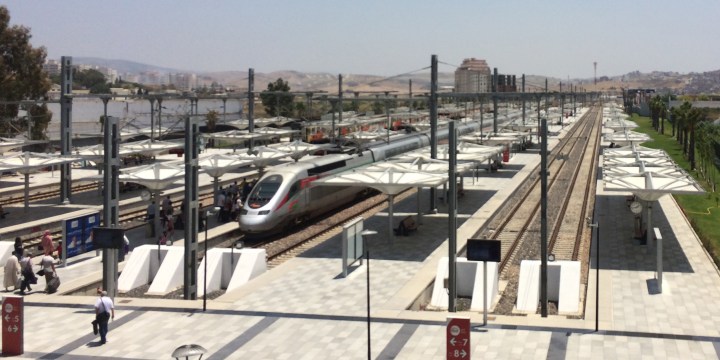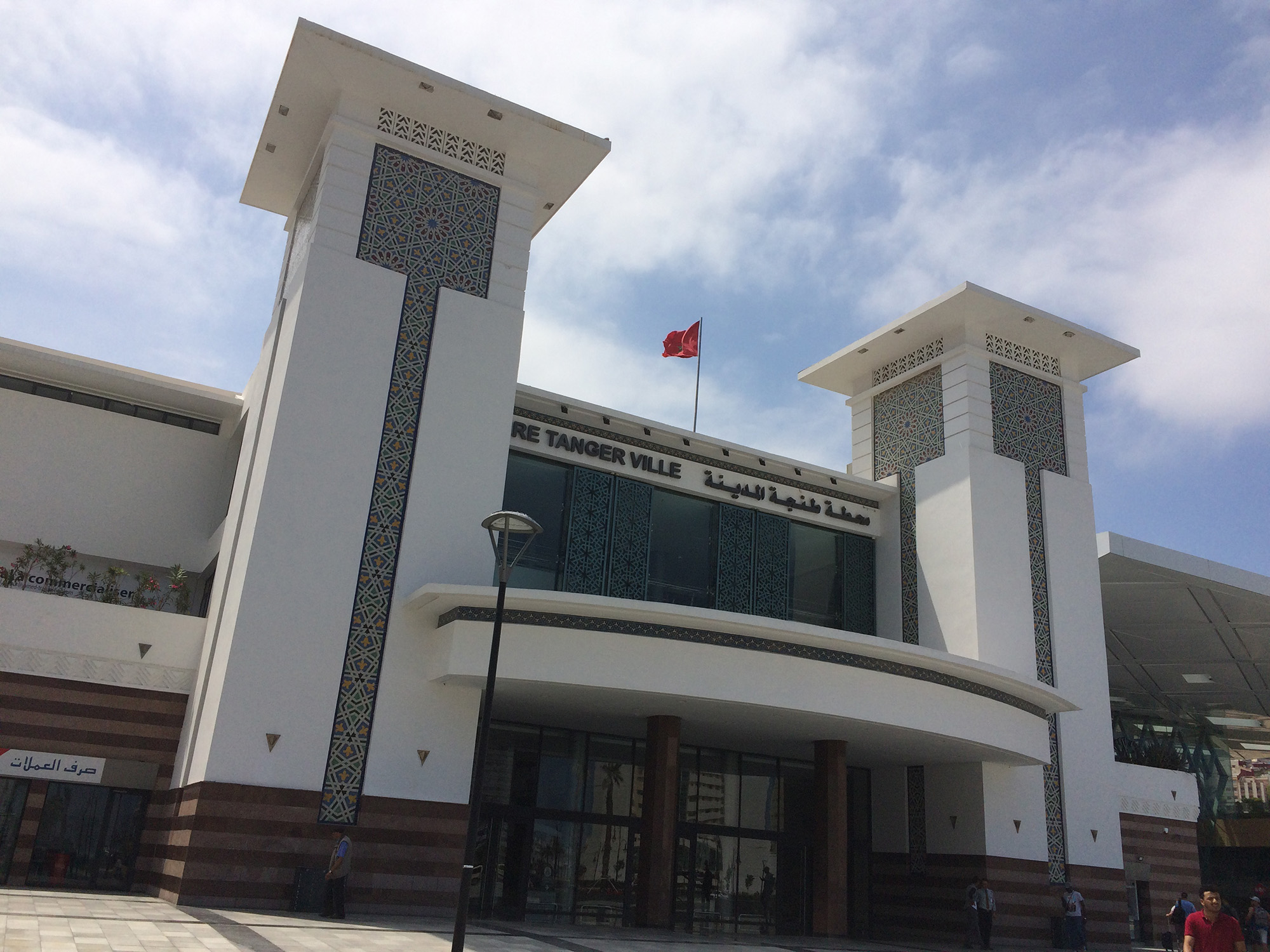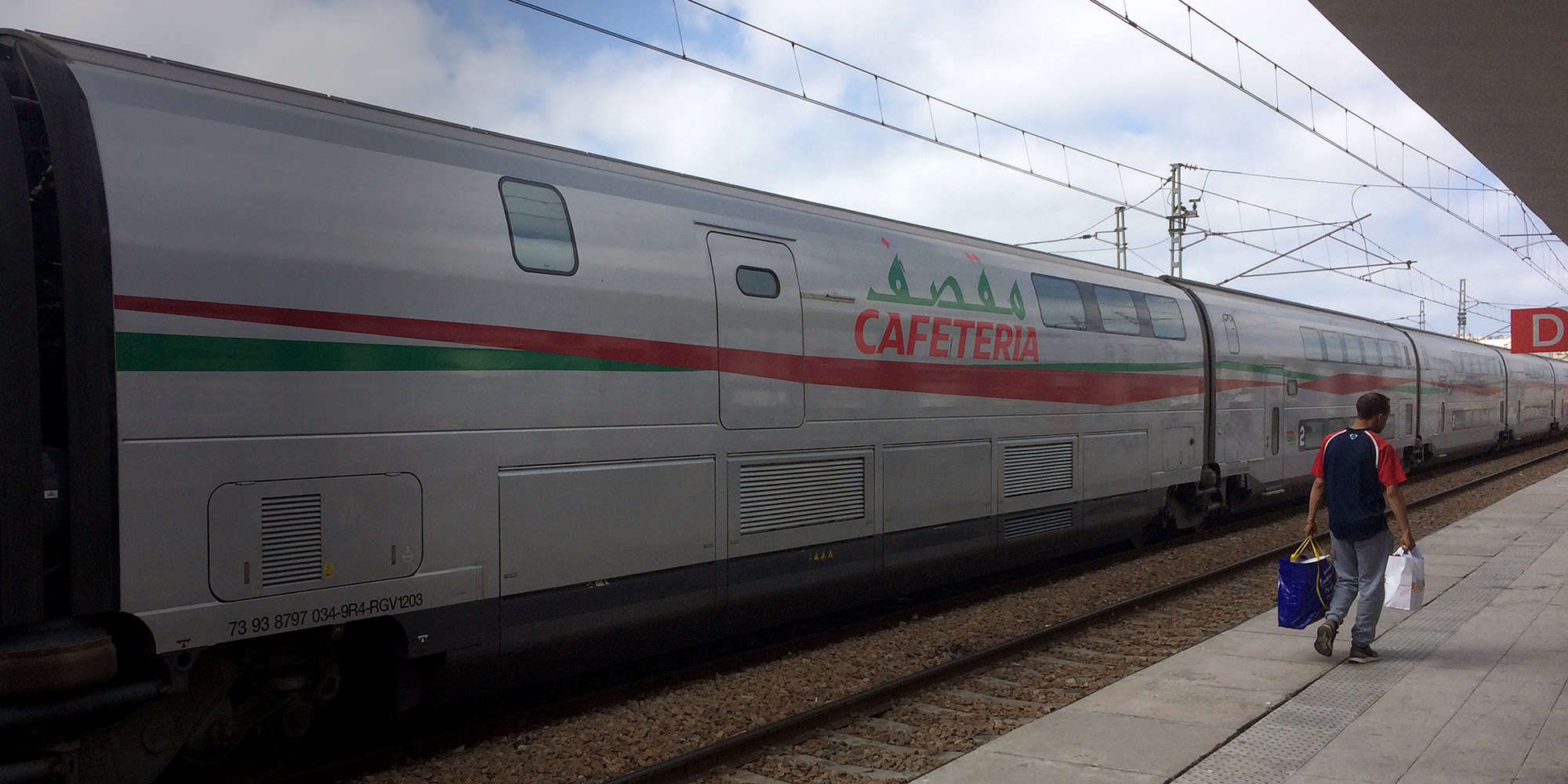MOROCCO’S BULLET TRAIN
One of Ramaphosa’s SONA dreams comes true — in Morocco

President Cyril Ramaphosa was mocked for announcing in his State of the Nation Address in June that he was dreaming of a bullet train from Johannesburg to Musina to Buffalo City and Ethekwini. In one African state, a bullet train is already running on an almost 200km track, but the price tag is still a major speed bump.
Travelling on Africa’s first bullet train really feels as good as it should. As we left behind the last of the jumble of luxury hotels and somewhat weary-looking apartment buildings of the Moroccan city of Tangier on the Atlantic side of the Straits of Gibraltar, my breath missed a beat or two as the Al-Boraq — Morocco’s bullet train — suddenly started picking up speed.
The smooth steel snake, named after the winged steed which, in Islamic mythology, carried the prophet Mohammed from Mecca to Jerusalem, properly thumbs its nose at the Gautrain. At 320km/h, this wonder is twice as fast. In a comfortable, air-conditioned second-class seat in a premium European import, there I was, flying across the flat, dry landscape. Tangier, Morocco is right up in the north of the continent, about as far from South Africa as you can get, but the scenery could have been the Free State in winter, or the Karoo.

At first sight, the airy station in Tangier could have been anywhere in Europe, with its McDonald’s and a Starbucks. (Photo: Carien Du Plessis)
It felt like, well, a dream, similar to the one President Cyril Ramaphosa recently had. The bullet train is the result of the vision of the King of Morocco, Mohammed VI — and it started with early feasibility studies as far back as 2003. The line was launched at a ceremony in mid-November 2018. French President Emmanuel Macron flanked the king for the opening — France was the biggest partner in the construction.
French company Alstom provided 14 doubledecker trainsets on a contract reportedly worth €400-million (R6.3-billion), as well as the signalling system. This means the Al Boraq is identical to those TGV trains on which you can zip from Paris to Strasbourg and back for a European Parliament session or meeting. The French also provided the biggest share of the loans for the construction. Additional funding came from some Gulf States and the Moroccan government.

The Al-Boraq has halved the travelling time between Tangier and Casablanca, south of Rabat, to just over two hours. (Photo: Carien Du Plessis)
There are reported plans to eventually have an 800km line that extends right down to Agadir, but for now, the train covers only the 186km between Tangier and Kenitra, just north of the capital Rabat. It has halved the travelling time between Tangier and Casablanca, south of Rabat, to just over two hours. The stations have also been revamped. At first sight, the airy station in Tangier could have been anywhere in Europe, with its McDonald’s and a Starbucks, but not a whiff of couscous. At least the toilets were free to use.
Ahead of the launch, French daily Liberation hailed the railway as part of a bigger revamp of Tangier which had been in the making for a decade previously. The European-looking station in Tangier is no accident. It’s part of a bigger plan to make the seaside city look more European, like its neighbour Spain, a mere 14km across the narrow Strait of Gibraltar. So far, at least for the tourist and seafront areas, the plan looks to be, well, mostly on track.
Judging from the number of passengers on this particular Saturday in early July, the train is popular, also with families. In fact, the bottom section of this particular second-class car was full of parents and kids, and my allocated seat was right next to a woman with a little boy. I wanted some quiet and space, so decided instead to find an empty seat by the window in the top section. Strictly speaking, you’re supposed to sit where the ticket tells you to. It made me feel delinquent in this very ordered train universe, but the friendly conductor didn’t tell me off and didn’t order me to move.
As bullet trains go, this one is pretty affordable. A ticket for the three-hour journey on the train to Casablanca (it slows down to 160km/h for the last half of the journey there, as this part of the rail line hasn’t yet been upgraded) will set you back only 130 Moroccan dirham (R190) if you book ahead of time, which was difficult because the ONCF national train service website didn’t accept my South African credit card, and neither did the self-service machines (it’s easy to use the card at the staffed counters, though). For a ticket on the spot, it’s around 183 dirham (R267). First class is 199 dirham upwards (R290). The Al-Boraq doesn’t cost much more than a 20-minute trip to the airport on the Gautrain, and it frankly feels way better. It’s also a lot cheaper than a similar trip in France, where specially priced tickets for a 225km trip from Paris to Lille start at €25 (almost R400), but can set you back more than €80 (R1,260) for the first class during rush hours.
Rail authorities hope to double usage to six million passengers over the next three years to help cover the cost of the project. Although Al Boraq’s fares are relatively low so as to be affordable for Moroccans (the minimum wage there is roughly the same as South Africa’s R3,500 a month), a pressure group campaigning against the bullet train, Stop TGV, said these would never cover the more than €2-billion bill for the construction of the railway.
Omar El Hyani, a Rabat city councillor, who was involved in the Stop TGV campaign, said:
“We made some of our own calculations, and it would have to be 500 dirhams (around €45) a ticket for the train to be profitable, and it will take about 50 years with full trains.” He said even though Moroccan civil engineers were used in the project (government said this helped keep the costs down), most of its value came from outside the country. “We imported very fancy technology — the train carriages, the rails,” he said.
El Hyani said it was also a case of over-investing in one train and under-investing in the others. Many ordinary trains on Morocco’s rails currently are 30 to 40 years old, with no plans to replace them.
“We are even buying second-hand trains from France, and refurbishing them. The double-decker trains were the last new trains to be bought 12 years ago,” said El Hyani. He wasn’t aware of projects right now to expand the current high-speed line, but it would make more sense — and be a whole lot cheaper — to upgrade the speed on the ordinary lines to up to 200km/h.
Also, as in South Africa, the question is what the best way would be to attract investors — by means of big-ticket infrastructure projects like, say, a bullet train, a smart city (Morocco already has a Chinese partner for this), a massive port (Tanger Med, where a new terminal was recently opened, is among the biggest on the continent and is supplemented well by the high-speed train), and the biggest solar power project in the world, visible on the way to the port; or perhaps it is more important to score more highly first on basic services such as education, health services, general infrastructure and political stability.
In continental terms, Morocco might have cast its eyes further into the future, to form part of the bigger picture, even though it wasn’t a member state in 2014 when then AU Commission chairperson Nkosazana Dlamini Zuma read out an imaginary email from the future saying:
“The African Express Rail now connects all the capitals of our former states, and indeed they will be able to crisscross and see the beauty, culture and diversity of this cradle of humankind. The marvel of the African Express Rail is that it is not only a high-speed train, with adjacent highways, but also contains pipelines for gas, oil and water, as well as ICT broadband cables: African ownership, integrated planning and execution at its best!”
Morocco left the Organisation of African Unity when Western Sahara was admitted as a member state in 1984 and joined the African Union in 2017 after considerable lobbying and debate and after the majority of states voted in favour of this (South Africa was opposed, due to its support for Western Sahara). Morocco has, however, been maintaining strong ties with other governments in Africa. It is possibly an early working example of the AU’s Agenda 2063, which sees an African Express Rail connecting the capitals of a stateless continent in just over four decades from now.
There’s one snag, though. Morocco is at odds with both its neighbours. It shares a vast border with Algeria, but it has been closed since 1994 due to political quarrels between the two. The issue of Western Sahara, to the south of Morocco, has added to friction between the two countries.
Western Sahara is claimed both by the Kingdom of Morocco and the Polisario Front, and it is a disputed territory listed as non-decolonised by the United Nations. Planning a train line through there is not exactly practical right now.
The high-speed line does mean that many businesspeople are travelling from Rabat or Casablanca to Tangier and back in one day, without the need for an overnight hotel booking, which means that, although the place is buzzing with business meetings, there have been some murmurs that the hospitality industry has taken a knock. The rest of the train system is still sluggish, unreliable, and some carriages without air-conditioning are ovens when it’s hot — although it’s still miles better than most of Prasa’s current rail offering.
Too soon, the train pulled into the Rabat station, of which parts are still under construction, and not long after that, although we were travelling more slowly now, we were in Casablanca and the luxurious journey was over.
Imagine zipping like this for brunch from Johannesburg to Gaborone in an hour, or to Durban in less than two hours; or how about being able to make a weekend holiday of travelling from Johannesburg to Tangier by train. For now, the biggest question seems to be: Is such bling justified and/or affordable? DM


















 Become an Insider
Become an Insider